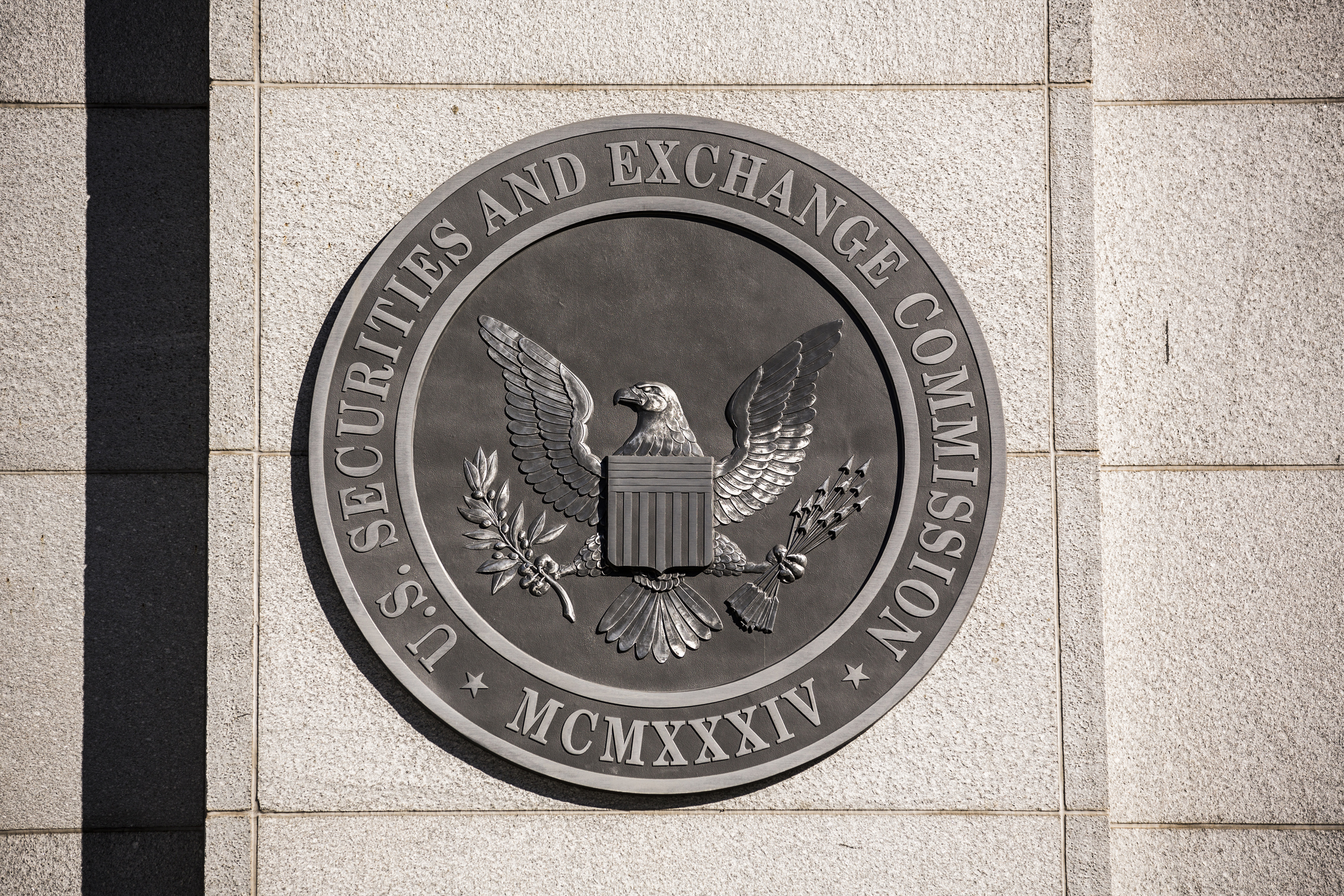Fidelity Magellan Reopens
Investors now have a shot at experiencing at least a little bit of this famous fund's former glory.

Fund investors can now do something with their money that they haven't been able to do for a decade, except through select retirement plans. They can now buy a stake in Fidelity Magellan fund.
On January 15 the fund (symbol FMAGX) reopened to new investors. Should you bite? Those who do will be buying into a storied, but spotty history.
Magellan was the poster child of the Great Bull Market of the 1980s. Run by the legendary Fidelity manager Peter Lynch, who had achieved a string of fantastic returns in the late 1970s, it had been closed to new investors for 16 years until Fidelity reopened it in 1981 -- just in time to be swept up by euphoria when the stock market broke free of a 20-year holding pattern and began a breathtaking ascent.
From just $107.88 $24.99 for Kiplinger Personal Finance
Become a smarter, better informed investor. Subscribe from just $107.88 $24.99, plus get up to 4 Special Issues

Sign up for Kiplinger’s Free Newsletters
Profit and prosper with the best of expert advice on investing, taxes, retirement, personal finance and more - straight to your e-mail.
Profit and prosper with the best of expert advice - straight to your e-mail.
Under Lynch, from 1977 through 1990, Magellan racked up an annualized return of 29%, according to Fidelity Investor. Hoping to cash in on Lynch's homespun "buy-what-you-know" philosophy, investors flooded the fund with money. Assets grew steadily, reaching about $14 billion in 1990, when Lynch abruptly retired, saying he wanted to do other things with his life.
A string of successors tried but could never duplicate Lynch's hot hand. Morris Smith earned an annualized 13% from 1990 to 1992 then quit the business entirely to pursue religious study.
Jeffrey Vinik earned 17% annualized but is now often remembered for moving out of tech stocks and into bonds in 1995 -- about five years too early, thereby missing a huge chunk of one of the biggest bull runs in history.
Still, the money poured in, and Magellan became so unwieldy that Fidelity again closed it to new investors, in 1997. Assets peaked at more than $110 billion in 2000. But soon after, Magellan lost the mantle it had held for years as the world's largest stock fund.
Then, the encroaching bear market dampened investors' enthusiasm for stocks overall. Even as stocks recovered, Magellan's returns struggled to keep pace with the market.
Unable to feed on investments by new shareholders and battered by withdrawals of disillusioned ones, Magellan began a long decline in assets. Microsoft dropped the fund from its 401(k) plan in 2005, and Ford Motor followed suit the next year.
Today, the biggest U.S. stock fund, American Funds' Growth Fund of America (AGTHX), with $193 billion in assets, dwarfs Magellan, with $45 billion.
The outlook for Magellan is starting to improve, however. In October 2005, Harry Lange replaced Robert Stansky -- often accused of being a closet indexer -- as manager. Lange brought with him the reputation of being a hot stock picker, earned over nine years at the helm of Fidelity Capital Appreciation (FDCAX). During his tenure there, Lange notched an annualized return of nearly 10%, compared with 8% for Standard & Poor's 500-stock index and 7% for Stansky during roughly the same period at Magellan.
Lange wasted no time making Magellan over in his own image, lightening up on financials, boosting tech holdings, thumbing his nose at benchmarks and generally making it known that Magellan was now a "go-anywhere" fund. And, after a sluggish 2006, Magellan's fortunes started to turn.
Jim Lowell, editor of Fidelity Investor newsletter, is a fan. "Lange is no weak kitten in the litter," he says. "There's no question he has done two things well: He's managed returns and he's managed the outflow [of investment funds] that still attends Magellan."
Lange is a bottom-up investor, which means he picks stocks on their own merits as opposed to making big-picture judgments on the economy and the overall market. But he adjusts the size of his positions based on his view of where the economy and the stock market overall are headed.
"I want to see a competitive edge and a management strategy that will lead to above-average earnings growth for a few years," he explains. Lange sells when earnings growth deteriorates, or occasionally, when price-earnings ratios become stretched. "In 2007, I cut back on some materials and infrastructure stocks where it appeared that earnings growth would slow," says Lange. "I also sold some Chinese stocks after they had risen 500% or more."
His instincts, clearly, were on target. Last year, the fund performed better than more than two-thirds of similar funds, returning nearly 19%, compared with just 6% for the S&P 500. In 2006, the fund returned 7%, on par with its peer group but trailing the S&P 500 by nearly nine percentage points points.
True to his word, Lange's 262 stock positions include mostly large-company stocks, but more than 20% of assets are invested in mid-cap stocks and there are even some small-caps, too. About one-fourth of assets are in foreign stocks, including the fund's biggest holding, Finnish cell phone giant Nokia (NOK). Bumped-up weightings in gold and oil stocks goosed returns last year.
The market is just now approaching the sweet spot for the kind of earnings-growth oriented investing that Lange specializes in, after years of rewarding stocks selling at bargain prices.
"Certainly, growth stocks have had a tough time since 2000, in spite of a lot of good earnings growth," says Lange. "I think growth stocks look attractive over the next few years. The valuations of growth stocks versus value stocks certainly didn't catch up in just one year."
Lange says his large-cap bias should also pay off in a weaker U.S. economy because large companies often have more international exposure, which cushions U.S. weakness.
"Domestic vs. international stocks is a tougher call in my view," Lange adds. "Foreign stocks have had a good run, but their economies also still look stronger, so for now, I'm maintaining a significant foreign stock exposure."
Proving that he's got a nose for bargains, too, Lange confesses to adding a small amount of beaten-down financials last year. "I will keep a very close eye on the sector in 2008," he assures me. A legion of analysts will help -- 400-plus, which is more than twice the number that supported Magellan when it closed back in '97.
So, will reopening the fund help or hinder this turnaround artist? Lange has complained about redemptions cramping his style. "The fund has been in steady redemptions since I took over," says Lange. "There's only been one day of net inflows that I remember. That means in big down drafts I haven't been able to buy anything, I've just had to sell."
Improved performance notwithstanding, Magellan will have to contend with redemptions for years to come. Some 85% of the fund's assets are earmarked for retirement, and the vast army of Baby-Boomers is starting to tap those dollars. Says Lange, "Reopening helps because it gives me an opportunity to put new cash to use."
In other words, it's a good time to reopen the fund. And not a bad time for investors to buy in, either. Magellan is not the only high-caliber growth fund out there. The fund's 0.54% expense ratio is well below average, and the minimum investment is a modest $2,500.
And investors -- I'm one of them -- who hung in there with Magellan in their retirement plans haven't been disappointed. As long as Fidelity, now that the floodgates are open, keeps Magellan's asset growth under control, we think investors have a good shot at experiencing at least a little bit of this famous fund's former glory.
Profit and prosper with the best of Kiplinger's advice on investing, taxes, retirement, personal finance and much more. Delivered daily. Enter your email in the box and click Sign Me Up.

Anne Kates Smith brings Wall Street to Main Street, with decades of experience covering investments and personal finance for real people trying to navigate fast-changing markets, preserve financial security or plan for the future. She oversees the magazine's investing coverage, authors Kiplinger’s biannual stock-market outlooks and writes the "Your Mind and Your Money" column, a take on behavioral finance and how investors can get out of their own way. Smith began her journalism career as a writer and columnist for USA Today. Prior to joining Kiplinger, she was a senior editor at U.S. News & World Report and a contributing columnist for TheStreet. Smith is a graduate of St. John's College in Annapolis, Md., the third-oldest college in America.
-
 Introducing Your CD's Edgier Cousin: The Market-Linked CD
Introducing Your CD's Edgier Cousin: The Market-Linked CDTraditional CDs are a safe option for savers, but they don't always beat inflation. Should you try their counterparts, market-linked CDs, for better returns?
-
 'Humbug!' Say Consumers, Despite Hot GDP: Stock Market Today
'Humbug!' Say Consumers, Despite Hot GDP: Stock Market Today"The stock market is not the economy," they say, but both things are up. Yet one survey says people are still feeling down in the middle of this complex season.
-
 The SEC Is Concerned for Older Investors and Retirement Savers. Here's What You Should Know
The SEC Is Concerned for Older Investors and Retirement Savers. Here's What You Should KnowThe SEC focusing on older investors, retirement and college savers, and private securities. Here's how those changes impact you.
-
 Best 401(k) Investments: Where to Invest
Best 401(k) Investments: Where to InvestKnowing where to find the best 401(k) investments to put your money can be difficult. Here, we rank 10 of the largest retirement funds.
-
 Fidelity Strategic Income Fund Excels In Hard Year for Bonds
Fidelity Strategic Income Fund Excels In Hard Year for BondsThe fixed-income market was volatile in 2023, but this Fidelity bond fund outperformed its peers thanks to strategic moves by management.
-
 What Is Margin Trading?
What Is Margin Trading?Margin trading is buying and selling stocks with borrowed money. It can generate big rewards, but margin trading also involves multiple risks.
-
 How to Find the Best 401(k) Investments
How to Find the Best 401(k) InvestmentsMany folks are likely wondering how to find the best 401(k) investments after signing up for their company's retirement plan. Here's where to get started.
-
 How to Master Index Investing
How to Master Index InvestingIndex investing allows market participants the ability to build their ideal portfolios using baskets of stocks and bonds. Here's how it works.
-
 Choosing Between Look-Alike ETFs and Mutual Funds
Choosing Between Look-Alike ETFs and Mutual FundsIf you're trying to choose between ETFs and Mutual Funds, some factors to help you decide are how you trade and the type of account you plan to use.
-
 The 5 Best Actively Managed Fidelity Funds to Buy and Hold
The 5 Best Actively Managed Fidelity Funds to Buy and Holdmutual funds Sometimes it's best to leave the driving to the pros – and these actively managed Fidelity funds do just that, at low costs to boot.
-
 The 12 Best Bear Market ETFs to Buy Now
The 12 Best Bear Market ETFs to Buy NowETFs Investors who are fearful about the more uncertainty in the new year can find plenty of protection among these bear market ETFs.